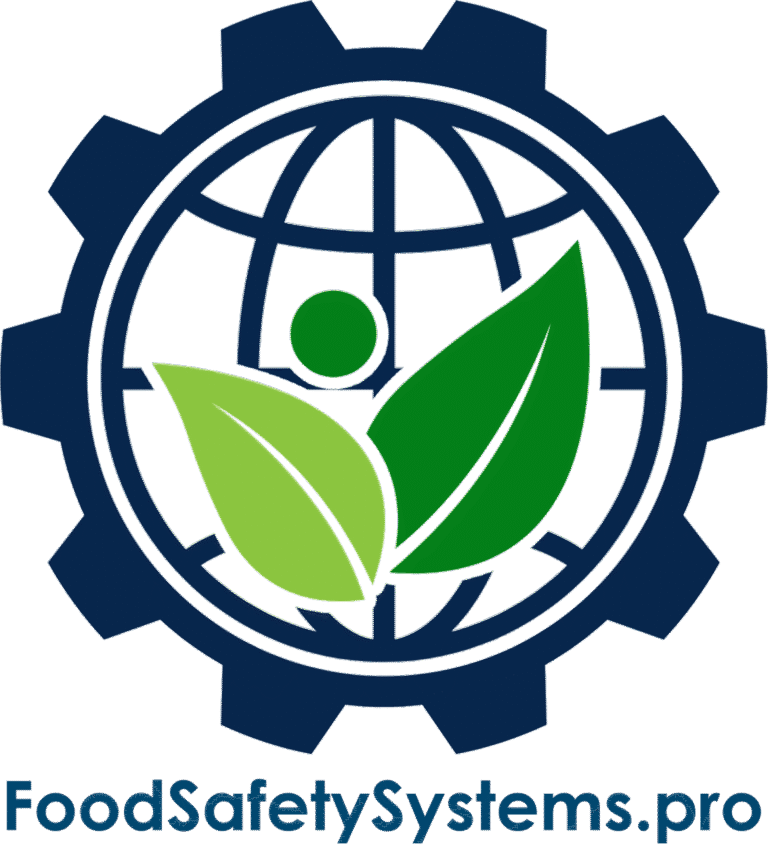Document Control Procedure Implementation
Aligned with SQF Code Edition 9 – System Element 2.2.1
Requirement Overview
According to SQF Code Edition 9, System Element 2.2.1 mandates:
“A documented procedure shall be established to control all documents and data required by the SQF System, including approval, distribution, updating, and retention.”
This requirement ensures consistency, traceability, and reliability across all documentation critical to food safety and quality.
Disclaimer: This article is for educational and implementation support purposes only. Food Safety Systems is not affiliated with or endorsed by the Safe Quality Food Institute (SQFI). For official SQF resources, visit www.sqfi.com.

Key Compliance Objectives
-
✓ Establish a comprehensive document control procedure
✓ Ensure only current, approved documents are in use
✓ Prevent unauthorized document use or access
✓ Maintain clear version history and retention systems
Step-by-Step Implementation Guide
1. Develop a Document Control Procedure
-
The procedure should cover:
-
• Standard formats for documents and records
• Approval processes and authority levels
• Version control rules (numbering, revision tracking)
• Distribution method (print, digital, hybrid)
• Archiving and retention periods
Evidence to Maintain:
-
• Approved Document Control SOP
• Documented approval and version history
- • Standard formats for documents and records • Approval processes and authority levels • Version control rules (numbering, revision tracking) • Distribution method (print, digital, hybrid) • Archiving and retention periods
- • Approved Document Control SOP • Documented approval and version history
2. Choose and Implement a Document Control System
-
Options include:
-
• Paper-Based: Central binders with manual sign-off and tracking
• Electronic: Cloud-based platforms with user permissions and audit logs
• Hybrid: Combines paper for critical control points with digital for central management
Evidence to Maintain:
-
• System overview in your SOP
• Photos or screenshots of current system in use
- • Paper-Based: Central binders with manual sign-off and tracking • Electronic: Cloud-based platforms with user permissions and audit logs • Hybrid: Combines paper for critical control points with digital for central management
- • System overview in your SOP • Photos or screenshots of current system in use
3. Train Staff and Assess Competency
-
Training should include:
-
• How to access controlled documents
• What to do when requesting changes
• Recognizing valid vs. obsolete documents
Evidence to Maintain:
-
• Training attendance logs
• Signed acknowledgment forms or completed quizzes
• Periodic refresher training schedules
- • How to access controlled documents • What to do when requesting changes • Recognizing valid vs. obsolete documents
- • Training attendance logs • Signed acknowledgment forms or completed quizzes • Periodic refresher training schedules
4. Monitor System Effectiveness via Internal Audits
-
What to Audit:
-
• Unauthorized or outdated documents in production areas
• Use of unapproved templates
• Missed review deadlines
• Backlogged approvals
Evidence to Maintain:
-
• Internal audit reports
• Findings and corrective actions
• System improvement records
- • Unauthorized or outdated documents in production areas • Use of unapproved templates • Missed review deadlines • Backlogged approvals
- • Internal audit reports • Findings and corrective actions • System improvement records
Common Audit Findings & Recommended Fixes
Non-Conformance
Corrective Action
No documented procedure in place
Draft and approve a Document Control SOP immediately
Use of outdated or uncontrolled forms
Conduct a document purge and reissue current documents
Incomplete or missing approvals
Implement tracked approval workflows with timestamps
Inconsistent document versioning
Use a structured versioning system (e.g., V1.0, V1.1, etc.)
| Non-Conformance | Corrective Action |
|---|---|
| No documented procedure in place | Draft and approve a Document Control SOP immediately |
| Use of outdated or uncontrolled forms | Conduct a document purge and reissue current documents |
| Incomplete or missing approvals | Implement tracked approval workflows with timestamps |
| Inconsistent document versioning | Use a structured versioning system (e.g., V1.0, V1.1, etc.) |
Auditor’s Checklist for System Element 2.2.1
Auditors may review:
-
• Your official Document Control Procedure
• Document approval signatures and version history
• Training and sign-off records related to document handling
• Real-time checks on production floor for uncontrolled documents
Implementation Roadmap
Create the System
-
✓ Draft the Document Control SOP
✓ Map workflows for creation, approval, and archiving
Train & Launch
-
✓ Deliver formal training with competency checks
✓ Post SOP and access instructions in shared spaces
Monitor and Improve
-
✓ Conduct 30-day system audits
✓ Schedule quarterly compliance health checks
Maintain Compliance
-
✓ Implement document review reminders
✓ Refresh the procedure annually or as needed
Why This Matters?
Strong document control practices:
-
✓ Ensure employees always reference the correct procedures
✓ Prevent non-conformances and avoid audit surprises
✓ Support traceability in food safety systems
✓ Contribute to a culture of operational excellence
Need Help Building or Cleaning Up Your Document System?
Food Safety Systems provides:
-
✓ Customizable SOP templates
✓ Training tools and staff sign-off sheets
✓ Hybrid digital/paper workflow systems
✓ Internal audit templates for document verification
Privacy Policy | Terms of Service | Disclaimer
Powered by Consultare Inc. Group, A Compliance Company







